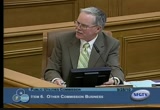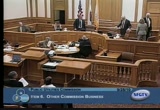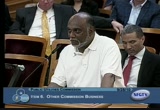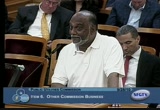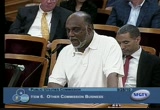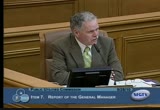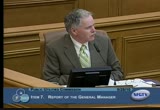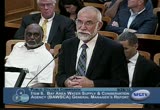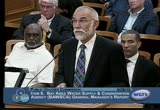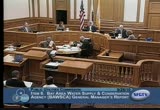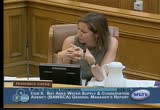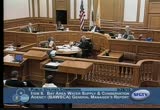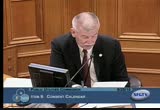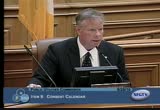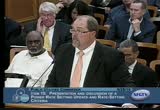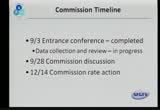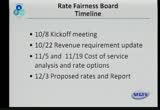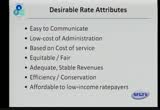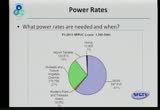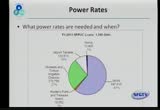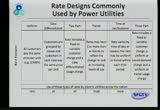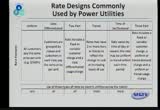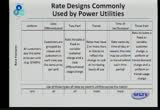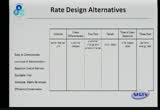tv [untitled] September 28, 2010 11:00pm-11:30pm PST
12:00 am
12:01 am
12:02 am
after his retirement he should attempt to write a book or something. believe me, when we deal with our peers and hour issues -- our issues in the byay, there are so many secrets that very few people know about them. this is one man that can help us now. i deal with students from universities where they make documents and then ask me questions. i would suggest that we engage the students from our universities to come and learn about our system and then encourage our retirees to
12:03 am
volunteer sometimes so they can share their experience. yesterday, i was in the park and i was listening to this professor from uc-berkeley who bring students here to talk about sfpuc and all of the politics, the bonding. i was really surprised that a professor from berkeley has taken it upon himself to share information like this, because as you know, commissioners, you do what you have to do, but what leads things to happen is politics. and our young people should know about all the politicking that goes on and how sometimes if you pay attention to the maintenance
12:04 am
of our infrastructure it pays good dividends, and if you do not pay attention to the maintenance of our infrastructure then we have rapid issues. jon is a great guy in all the time i have known him. it is really said that he is leaving, but i suppose you have to retire sometime. i am requesting that we tap into his experience, bring him back sometimes, though he may enjoy his retirement sometimes, and share his experience with the students. and i think he will say yes if you do it the right way. thank you very much. >> thank you, mr. dacosta. >> next item is the report of the general manager. >> there is nothing listed because i have just a few short comments, a couple items of
12:05 am
note. last friday, we had the groundbreaking for our pipeline at no. 5, a great success. saturday, several of you join us for the anniversary of the somalian -- sonolian temple. we had put out and rfp for the cca project. at the meeting a week and a half ago friday, lasco commissioners asked us to make sure we got a robust grouping of respondents. there are a couple of changes they asked us to make. one relates to allowing people to bid on portions of it. the city policy has been to make sure it was bundled, and they could provide power and services
12:06 am
altogether. they asked for us to allow us to be bid on separately. we are revising that rfp. a revised one will go out this friday. that will delay the responses until the first week of november, since we are not changing what they apply for, but they have a chance to take a look at that. it is all done with an eye towards trying to make sure that we have as many as possible respondents to the rpf. -- rfp. those are the only items i have unless there are questions. president crowley: thank you. i do want to say that i saw the press release because of a standing invitation. i could not make it friday. it was very good press. i see tremendous organization for moving forward. nothing more needs to be said on
12:07 am
the water temple. it was destined to be there. hopefully no more seismic activity. next item? >> the next item is the bosca update. mr jensen is present. -- bawsca update. >> we have an obligation to work with member agencies to plan the portion of water they get during a drought amongst themselves. the agreement we signed with each of those agencies determines how much water san francisco gets and how much we get in the aggregate. we have worked with staff members approved by the city manager and water district general manager and corporate president to reach a consensus among them as to how they which to divide up the pie.
12:08 am
-- how they wish to divide up the pie. there will be taking a plan to the governing bodies for adoption. if that is unanimous, we will mail you the result. if it is not unanimous, it is the bawsca board's responsibility. the groundbreaking for the tunnel was a great event. it was a great beginning. president crowley: finishing is better than starting some of these projects. >> if i retire before them, i will come back. lastly, mr. dacosta talked about students and the importance of academia. yesterday, we got a request from a college i had never heard of before, and that is my failing, lake superior state university
12:09 am
in michigan. they are interested in your system and issues about it. bringing the young people along is one of our duties, just like turning our employees. there is another one from michigan. president crowley: thank you, mr. jensen. commissioner moran: one of the things i lost track of was in going toward the allocation of the 2018 supply and limit -- supply limit, we talked about information that was going to go from you to staff. staff had to figure out whether we had to gear up to do it from scratch or not. where does that currently set? >> i will share what our end of
12:10 am
that is and mr. richard harington will describe what they're and is. commissioner moran: we had talked some time ago about bawsca getting puc staff information about the 2018. depending on what they are doing or not, that might necessitate us gearing up to do a fairly major effort of our own. i was wondering where that stood. >> we have worked with our agencies and provided some analyses. then we shared copies of a few samples of the results with mr. harington and his staff and came forward with no consensus recommendation from those agencies. now it is in steve's court.
12:11 am
>> i forgot to load the presentation on the computer, so i was working. we received those examples from the bawsca customers and subsequent to that took a shot at interim supply allocation to the customers, distributing the craft form. we found out talking about these opposing concepts, nobody said anything. we now have feedback and numbers out there. we did have a meeting about two weeks ago with the customers to get feedback on that. we are working now on producing a revised draft written about and get more feedback on with the anticipation we would bring that forward to you on november 9 with perhaps not a formal recommendation but to get any policy guides, and come back on december 14 for adoption prior
12:12 am
to the december 31 deadline. commissioner moran: thank you. vice president vietor: i wanted to also follow up on the comment about these educational opportunities around our system and students. it seems to me with our almost former commissioner stepping into the assistant general manager of external affairs role, it might be a wonderful program to think about developing as some kind of focused educational program for students on our water system, our energy programs, our waste water system, and what that might look like. i am sure she has a full plate, but since she is not here i will delegate in someone's absence. we could continue the dialogue. i really appreciate that. i think there is a lot of value to it. >> we have a variety of things going on now and part of it is to focus.
12:13 am
we talked about the possibility of using the arts commission to present and how that can fit into educational programs. waste water does a variety of those already. we have even talked about should we buy a bus so it is easier to get kids to come. how do we do the best out reached? it is there. we are trying to bring that together. president crowley: any other public comments before we move on to the next item? >> cnet item is the consent calendar. all items listed under the consent calendar are considered routine by the public utilities commission and will be acted upon by a single vote of the commission. a -- staff recommendation to approve amendment no. 2 to the water enterprise, water system improvement program 834b13 and
12:14 am
authorize the general manager to execute the amendment. b -- approve modification # one to the water fis -- the water enterprise program wd-2561 to at installation of approximately 400 feet of eight-inch ductile iron man's, improve the work that includes sidewalks, curbs, and gutters on green street. commissioner caen -- ratify then of emergency made by the general manager of the san francisco public utilities commission august 19, 2010 for immediate replacement of the existing sewer on polk street from bush
12:15 am
street to pine street for the amount of $421,071. commissioner caen: do you -- president crowley: do you want to pull any items on the consent calendar? do you have any questions? vice president vietor: i do not. president crowley: all those in favor of moving nine a through c, signify by saying aye. >> we have no speaker cards on this item. president crowley: now we are on to regular business. >> item 10, presentation and discussion of a power rate setting up date and rate setting criteria. >> i am todd rydstrom.
12:16 am
you have been to the rate setting process for many times. given the projected growth of the redevelopment area, especially treasure island as well as hunters point shipyard, we have undertaken construction as part of the budget a revenue requirement review of the power enterprise as well as a rate review. the charter also requires a price tier to be considered them for us to hire an independent consultant to review the cost of service as well as the rates and to bring them before you. today i have 14 brief slides i would like to walk you through. the most important part from the staff perspective is to hear from you if there is a particular criteria or rate design or creative policy idea or implementation policy would like us to factor in as we
12:17 am
review these rates and proposed rates, and then have those ready for you to deliberate on and consider it later this year in late november or early december. if i could just transition to the power point here on the computer, the review progress and objectives of the first item -- we have contacted with others to contribute to the rate design and rate analysis. to date we will update you on where they are and get your thoughts on criteria, a key policy directives, and special rate setting. you will be able to share those today and have agreements and questions all throughout the fall. we encourage you to forward those to us as well. the key deliverable as you will
12:18 am
be seeing and hearing more of -- deliverables you'll be seeing and hearing more of is a draft report from the consultants as well as a proposed rate legislation before you by december 14 for your december meeting. in addition to the work that we are doing at the staff level and your commission timeline in particular, we are humming the entrance consul to. that was done in early december. ms. power and by our partners and are working closely on the cost of -- and i are partners and are working closely on this. it is a very unique thing. tandem work is also occurring
12:19 am
with the rate fairness board as required under the charter. we have held a number of meetings over the next few months with various board members. we will be going to the cost of service for hetch hetchye che power. we go through that so they understand the underlying cost of service. we will review rate design in similar package to what you have before you today as well as all the alternatives and potential combinations of rate design, as required under the city charter, to write a recommendation and report and some not out to you as well in late november or early december. the key attribute of any rate setting is the ease to communicate, the low cost of
12:20 am
administration, to make sure the cost of service is equitable and fair, adequate, stable revenues that promote efficiency and conservation, and affordable programs for low-income ratepayers. you will notice that is almost verbatim with the criteria required by the charter. in the case of power rates, you have flexibility currently to provide subsidies legally under the california constitution. it is a more flexible rate setting than what you otherwise have during your power and with water rate deliberations, which are constrained and limited. that is only cost of service without subsidy. the key components to this slide are other key policiey issues or criteria you would like us to include on this score
12:21 am
card. if you could think of that and got those, i will give you another chance at the end of the presentation to ask those if you would like. to put this into context, the power enterprise is roughly a $100 million operation of the sfpuc's total budget. it is providing to san francisco what is effectively the equivalent of about a third of all the power used throughout the city. that third of the power is mostly going to all the municipal buildings, the municipal railway, the school districts, the housing authority, and that large blue wench represents that, 61%. the next would be the modesto and turlock irrigation
12:22 am
districts. they also have rights to low- cost power in particular. the next largest is the airport tenants. we provide power to the tenants at san francisco international. they comprise about 10% of all the usage of power. the sliver that in particular is of interest to the rate fairness board is the rate that we retell. that is what voters asked the fairness board to do in 2002. their work will be spent almost entirely on that very small sliver of about 1% of projected retail demand at the hunters point shipyard, the trans bay terminal, and at treasure island. nevertheless, it is a potentially growing wedge depending on how fast we develop the project as areas grow. this is a very full slide, but
12:23 am
if i could take a moment and what he threw it, which challenged the consultants as well as our staff and myself 0 --- if i could take a moment and walk you through it, we challenged the consultants as well as our staff and myself to see how rate designs compared to current rates and how the long list of options could possibly apply. across the top of this are six key types of rate setting structures. the first few to the left are going to be very familiar to you, because you have seen them and used them in water and waste water rates over the last 10 to 15 years. we will look at if there is applicability to any uniform rate, where everybody gets charged the same amount, just like a postage stamp.
12:24 am
whether you send a letter to new jersey or virginia, it cost the same amount. levels of service at time of use are not differentiated. based upon our research, if you go to the bottom of that page, that is rarely ever used in power rate setting. you would imagine not a lot of proposals will be before you for that in late november and early december, nor before right fairness. however, in class differentiated, that is where we looked at residential demand verses commercial demand -- versus commercial demand, we can separate large businesses or so families or anything else. that is frequently used in water, waste water, and power setting. the next category of rates is two part rates.
12:25 am
this is what you have now for the water bill, where we have a charge that represents 20% of the average bill related to fixed equipment and fixed capital costs. then there is an 80% volumetric where the more you use the more you are billed -- volumje metric where the more you use the more you are billed. tiered -- if you are a super user, it is there a way to structure a discount for people with low usage tax on water and waste water, we have to tears. for your first three units, you are charged one rate. w-- we have two tiers. in those categories are often used by other power utilities,
12:26 am
typically used as well by water and wastewater utilities, and are fairly common already to you based on your prior rate settings. over to the right are the newer things that will also be coming before you. differentiation for time of use and seasonality -- this allows for special pricing or price differentiation for peak demand in a day like today. a lot of air conditioners are being run and the cost of power right now to run an additional load is much higher because of the increase yet very large used infrequently. we will be looking at that as well as seasonable variations in demand and take into account our climate in the bay area that is more temperate. the last one is a three part, differentiating a large fixed
12:27 am
amount to come on line as well as implementing tiers and other pricing. you will have a burly link the packet to look at and -- a fairly lengthy pocket to look at and we will distill it to recommendations of staff as well as what the consultants propose to you, as required under the charter. to put this in perspective and pause for a moment, if you look at pg&e ratings right now, there are 83 different tariffs that a customer who reside in san francisco may be subject to. in our rate setting process, because it is largely based on loaded and cost of service, we would anticipate less than 20 different tariffs. to the degree you do a low income discount, that typically is a known at schedule. that could count as one. vice president vietor: the 20
12:28 am
different tariff options are categories would probably fall into these five designations? >> that is right. on the residential businesses, the recommendation might be to differentiate by class and time of use. that could be one or two schedules. you could have a base class and then you could have a time of the schedule wil-- time of use schedule. we will make it as administratively streamlined as possible and not nearly as lengthy as a pg&e equivalent. this is just to kind of what your appetites to what you see later this fall and in early december. the rate design alternatives in particular that would be helpful for stuff to get from this commission is down the left-hand
12:29 am
side. if there are additional criteria then easy to communicate, low-cost administration -- if there are measures of how you want us to look at a quick ability, fairness, -- equitability, fairness, or stability of revenue, we would like to get those from you and we will score those evaluations against all the different rate models. what i have done for you today is giving you a high-level view based upon sort of a street light perspective of where some great designs to a really good job and where they fall short. if i may walk through this uniform rate example, it is really easy to communicate. the public typically likes that. it is
95 Views
IN COLLECTIONS
SFGTV: San Francisco Government Television Television Archive
Television Archive  Television Archive News Search Service
Television Archive News Search Service 
Uploaded by TV Archive on

 Live Music Archive
Live Music Archive Librivox Free Audio
Librivox Free Audio Metropolitan Museum
Metropolitan Museum Cleveland Museum of Art
Cleveland Museum of Art Internet Arcade
Internet Arcade Console Living Room
Console Living Room Books to Borrow
Books to Borrow Open Library
Open Library TV News
TV News Understanding 9/11
Understanding 9/11